Physical therapy in Frankfort, New Lenox for Basketball
Stretching is an essential part of successful basketball. A good stretching routine can help to minimize muscle imbalances, prevent injury and improve your basketball performance. The following stretching program is designed for basketball players who do not have any current injuries or individual stretching needs. If you have an injury, or a specific mechanical imbalance that may be holding back your basketball performance, your JointPro Physical Therapy physical therapist can design a stretching program just for you.
When is the Best Time to Stretch?
When your muscles are warm and relaxed! Basketball is a dynamic sport so you'll need both dynamic and static stretching. Dynamic stretches form part of your pre-game or pre-practice warm-up. Static stretches can be included at the end of your cool down or at other times to improve your overall fitness.
Pre-game/ pre-practice:
General warm up (5-10 minutes). The aim of a general warm-up is to get the blood flowing to all parts of the body to be used during basketball, including the cardiovascular system. A basketball warm-up may include jogging, stationary cycling or jumping jacks.
Dynamic stretching. Gradually the speed and intensity of your movement is increased. See below for stretches.
Technical and speed warm up. This includes high intensity, basketball specific drills. Drills for speed and agility should be kept short with recovery time between drills to ensure you are not fatigued before your game.
The pre-game regime, including the dynamic stretching program below, will take about 30 minutes to complete. Make sure you arrive at the court in plenty of time.
Post-game/ post-training:
Cool down. A cool down allows the body, in particular the cardiovascular system, to gradually return to its resting state. A cool-down reduces your chances of becoming dizzy or faint after exercise, allows any waste such as lactic acid that has built up during exercise to dissipate and may reduce your chance of having Delayed Onset Muscle Soreness (DOMS). Cool down by gradually reducing your intensity of movement such as walking or cycling on a stationary bike, for about 5 minutes.
Static stretches. Commence your stretching regime directly after a short cool-down, before the muscles have cooled completely.
Rules for Dynamic Stretching:
Warm up your muscles first, then stretch while your muscles are still warm.
Move through your range of movement, keeping control of the movement with your muscles. Do not allow momentum to control the movement by "flinging" or "throwing" your body parts around.
You may feel light resistance in your muscles, but you should never feel pain during a stretch.
Start with slow, low intensity movements, and gradually progress to full-speed, game-like movements.
Dynamic Stretches:
Jumps

Lunges

Leg swings forward and back

Leg swings sideways
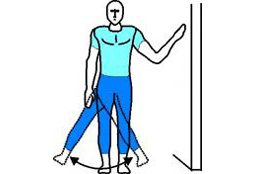
Trunk rotation
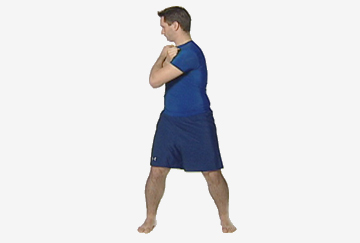
Arm circles

Groin

Rules for Static Stretching:
Warm up your muscles first, then stretch while your muscles are still warm.
Slowly take your muscles to the end of their range. You will feel light resistance in the muscle, but you should never feel pain during a stretch.
Hold the stretch in a static position. Do not bounce. This will help slow down the nerve impulses and return your muscles to a resting state.
Hold each stretch for 20-30 seconds. Repeat each stretch 3-4 times.
Static Stretches for Basketball:
These muscles are your prime movers for basketball. You'll need to stretch these muscles after each training session or game. Don't forget to stretch both sides. The static stretches will take at least 24 minutes to complete.
Calf (Gastrocnemius)

Calf (soleus)

Triceps

Pectoral muscles
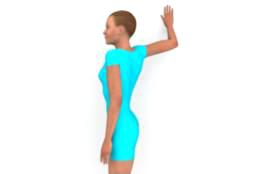
Lumbar spine lateral flexors

Trunk rotators

Quadriceps
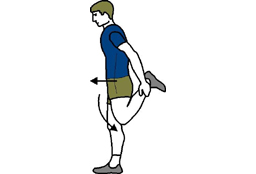
Hamstrings

Hip flexors

Groin

ITB Stretch
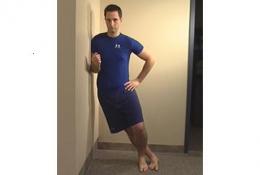
Gluteal muscles








